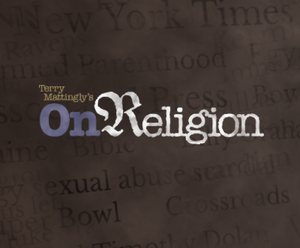
It was the kind of open-ended question researchers ask when they want survey participants to have every possible chance to give a good answer.
Thus, a recent 50-state study of Millennials and younger “Generation Z” Americans included this: “During the Holocaust, Jews and many others were sent to concentration camps, death camps and ghettos. Can you name any concentration camps, death camps or ghettos you have heard of?”
Only 44% could remember hearing about Auschwitz and only 6% remembered Dachau, the first concentration camp. Only 1% mentioned Buchenwald, where Nobel Laureate Elie Wiesel was a prisoner when the American Third Army arrived.
Another question: “How was the Holocaust carried out?” While 30% knew that there were concentration camps, only 13% remembered poison-gas chambers.
“That was truly shocking. I have always thought of Auschwitz as a symbol of evil for just about everyone. … It has always been the ultimate example of what hate can lead to if we don’t find a way to stop it,” said Gideon Taylor, president of the Conference of Jewish Material Claims Against Germany.
It was a sobering “wake-up call,” he added, to learn that half of the young Americans in this survey “couldn’t name a single concentration camp. … It seems that we no longer have common Holocaust symbols in our culture, at least not among our younger generations.”
Popular culture is crucial. It has, after all, been nearly 30 years since the release of Steven Spielberg’s “Schindler’s List,” so that landmark movie isn’t a cultural reference point for many young people. And it’s been 20 years since the original “X-Men” movie, which opens at the gates of Auschwitz, and almost a decade since “X-Men: First Class,” which offered a variation on that concentration-camp imagery.
Old movies and school Holocaust-education materials, said Taylor, are clearly being buried in information from social media and Internet search engines.
“The world has changed so much in terms of how information is transmitted,” he said, reached by telephone. “Obviously the Internet has transformed how young people take in stories and information. … Twenty years ago, we could assume that most students were being exposed to books by Elie Wiesel” in history classes or “movies like ‘Schindler’s List’ or ‘Sophie’s Choice.’ We cannot assume this anymore.”
It was encouraging that 80% of survey respondents said Holocaust education projects should continue and 64% thought these class sessions should be compulsory.
Nevertheless, this survey about the Holocaust history should trouble citizens who worry that future generations will fail to recognize outbreaks of terror and persecution, said evangelical activist John Stonestreet, in a BreakPoint radio commentary written with David Carlson.
Imagine, he said: “Millions of religious and ethnic minorities — men, women and children — herded on to trains, hauled away to concentration camps for ‘reeducation,’ used for slave labor, their heads shaved, and hair used for products sold to support the government. Women forcibly sterilized, babies forcibly aborted.”
That’s happening in China right now with Muslim Uighurs and other religious minorities, he noted. Students who fail to learn the unique lessons of Holocaust history may struggle to “distinguish between heroes and villains” in today’s world.
Taylor also stressed that the Claims Conference survey offered disturbing evidence that radical forms of Holocaust denial are gaining traction in Internet subcultures. Young people who do online term-paper searches for “Holocaust” information will now be exposed to anti-Semitic materials from round the world.
Nearly half (49%) of survey participants said they had seen Holocaust denial materials on social-media platforms and other websites and 56% of them — across all 50 states — said they had seen Nazi symbols in social-media messages. Meanwhile, 36% of those interviewed said that two million or fewer Jews died in the Holocaust, instead of six million.
Researchers were stunned that 11% of survey participants believed that Jews actually caused the Holocaust — including 19% of those contacted in New York.
At this point, Holocaust denial is not a product of radicals on “the left or the right. It’s better to say that they are just out there on the fringe,” said Taylor. “What has changed is that the Internet has given them a megaphone they didn’t have before. … It’s an online platform that they clearly are using to influence more and more young people.”













